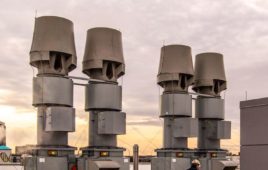The new regulation accepts that the presence of insoluble protein particles is an intrinsic part of protein-based therapies and labels these naturally occurring particles as “inherent” particles. It differentiates between these inherent protein particles and those “contaminating” particles that should not be present. It goes further and sub divides the latter into:
• Extrinsic particles: those that are added to or fall into the drug product from an external source, such as the air.
• Intrinsic particles: those already present in the drug container before it is filled with the drug product. This may come from ineffective cleaning processes or as a result of potential aggregation of the drug compound itself over time.
Both USP chapters <788> and <787> require the manufacturer to test for particles at ≥10 micron and ≥25 micron in size. Typically the inherent protein particles are in the sub-micron, nanometer size range and are not, therefore, detected by the tests. However, a common feature of protein-based therapies is the tendency of the proteins to group together, or aggregate, over time. Because of this, protein aggregations are likely to form large enough particles to have an impact on the pass or fail result of the USP <787> or <788> test. Protein aggregation is also undesirable from a drug efficacy point of view as aggregation causes the therapeutic part of the protein to become occluded, making it less effective. For the patient, this means that the normal dosage may no longer work and their condition would therefore deteriorate.
This cleanroom tip was taken from “USP <787> for Subvisible Liquid” by Tony Harrison. The article originally appeared in the November/December 2015 issue of Controlled Environments.



